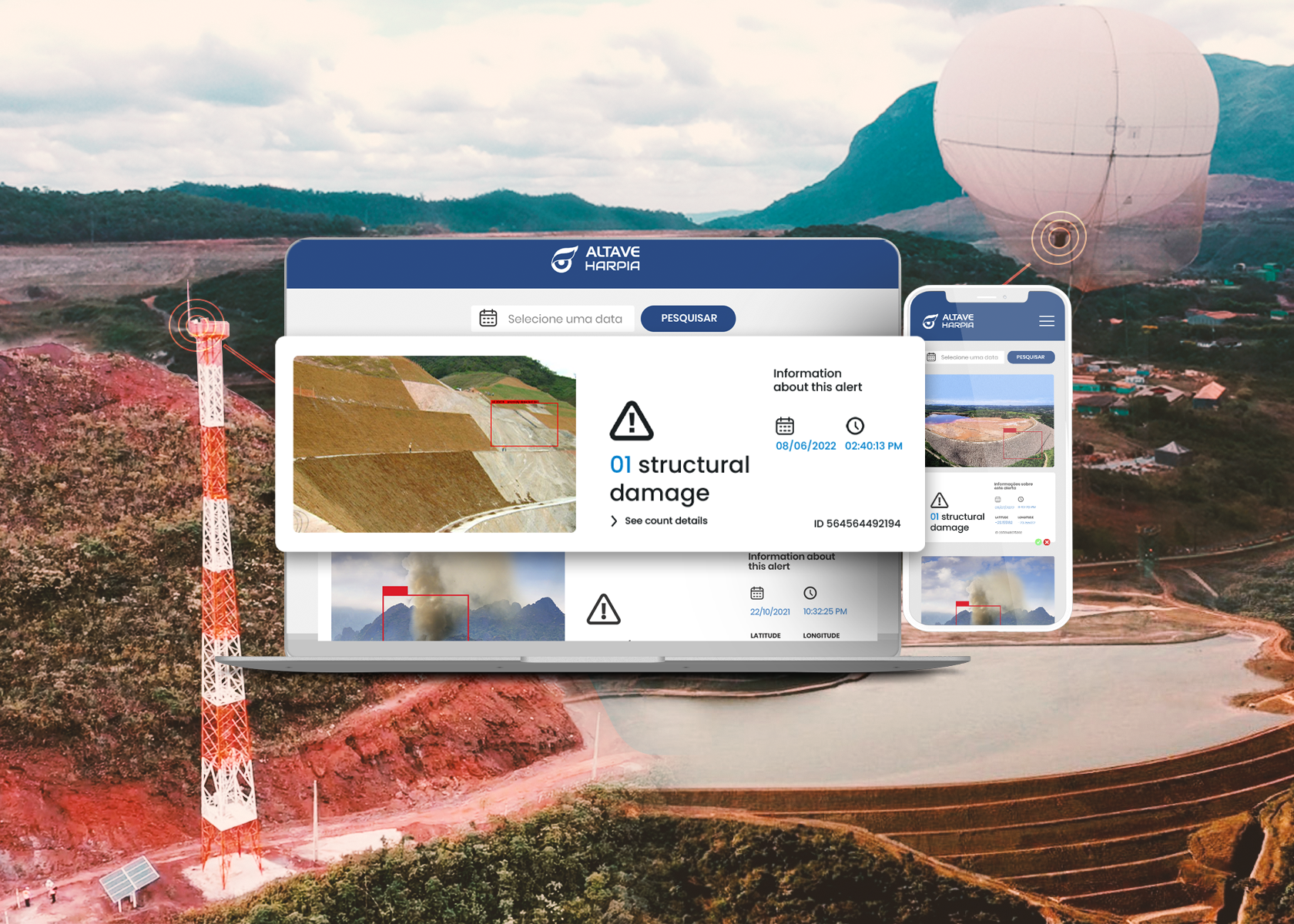Publicado em: Jornal SecurityNewsDesk (Reino Unido)
Edição 19 | 08 de julho de 2016

With the Olympics and Paralympics in Rio de Janeiro, Brazil, just around the corner thoughts are naturally turning to how best to protect the athletes and spectators attending the world’s largest sporting event this August. It is not just international terrorism which those running the games and – the 47,000 security guards, 65,000 police, and 20,000 armed service personnel – will have to contend with from a safety and security perspective, the 2016 Olympics are also being held against a backdrop of soaring crime rates in Rio – 471 homicides were reported in April alone – a 38.9 percent rise over April 2015; a faltering Brazilian economy – with the security budget under pressure from a reported $500 million of cuts; political turmoil, and the outbreak of the Zika virus.
Persistent sky-high view

Against this troubling backdrop there are thankfully some positive security developments to report where Rio is concerned which may help it to weather the storm. Foremost amongst these is the forward thinking decision to deploy a number of tactical aerostats – or blimps. These will be tasked with floating continuously above Olympic and Paralympic venues as airborne security assets on the lookout for suspicious terrorist and criminal activity.

The solution in question, chosen by the authorities responsible for safeguarding the Olympics, is the OMNI aerostat from ALTAVE – the Brazilian lighter-than-air aerospace company – which the vendor claims is the first wide area, persistent surveillance, aerostat developed for civilian applications.
In operation the OMNI with its on-board sensor suite is able to cover – and record – an area of 40 square kilometres. According to ALTAVE, four of the state-of-the-art aerostats will be deployed throughout the Olympics under the approximately US $8 million contract. Key elements of the contract, agreed by ALTAVE, include: the aerostats themselves as well as the winch systems, trailers, tethers, optronics, imaging processing servers, energy supplies, software and training. ALTAVE says that it has been able to deliver the field-tested units, ahead of schedule, just six months after the signing of the contract.
Talking technical
Looking in more detail at the features of the ALTAVE OMNI, the advantage of the six metre size aerostats, compared to other aerial surveillance solutions, reckons ALTAVE, relates to the way they are able to float continuously above the ground, providing a visual deterrent to potential terrorists or criminals, with low operational costs. In fact they can offer up to three days of flight time after which, ALTAVE says, only a small amount of helium replenishment is required.

Some of the other stand out characteristics of the OMNI aerostat range from the fact that it is able to capture imagery of more than 120 megapixels per frame – 60 times that of full HD resolution or 15 times 4K – at three frames per second. There is also the capacity for up to six users to watch different parts of the full captured image as if they were independent Pan, Tilt and Zoom (PTZ) cameras. In terms of deployment, all of the items related to the OMNI are easily transported in a single trailer.
Security requirements
Catching up with Bruno Avena de Azevedo, Director and co-founder of ALTAVE, for an inside view on the development of OMNI project and the contract for the Olympics he starts by telling me more about the major security challenges which, in his view, an event like the Olympics faces: “The Olympics is a complex event for security, with many things going on at the same time, during long periods.” He adds that given this it is a hard task to keep everything monitored and to detect suspicious activity in such an environment before something bad happens: “The authorities realised that for this event filling all the city with cameras wouldn’t solve the problem, the information would be scattered.” For Bruno Avena de Azevedo the beauty of the ALTAVE OMNI, set against this context, is the fact that it is a solution which offers a ‘big picture’ or – more technically speaking – a solution that offers ‘situational awareness’.

Returning to some of the performance characteristics of the OMNI, Bruno Avena de Azevedo says that the area watched, when put into the context of four aerostats, corresponds to an impressive 13 percent of the full Rio city area: “In fact this comprises almost 100% of the four clusters that will hold the games. Each ALTAVE OMNI will capture the equivalent of 60 full HD [High Definition] cameras, a huge amount of data with the strong advantage that they are in a continuous image, making it easy to understand the context,” explains Bruno Avena de Azevedo. He adds that the same operators tasked with handling the aerostat are able to exploit any captured images in real-time or review those recorded in the past.

Asked about where the latest aerostats fit into the wider aerial surveillance picture at major events, Bruno Avena de Azevedo doesn’t believe that it is, necessarily, a case of either or: “Drones, helicopters, and aerostats are in fact complementary technologies. Aerostats have the lowest flight hour cost and the highest endurance. This makes them ideal for detecting suspicious acts and understanding long-term activities.
They are also useful to help inhibit the activities of criminals with an “area effect”.” Bruno Avena de Azevedo goes on to explain that when you have a temporary solution, such as flying a drone or helicopter, criminals have the opportunity to hide and wait things out. The benefit of bringing an aerostat into the aerial mix is, he says, that, when used in combination, an aerostat can detect and then trigger a drone or helicopter to go to a ‘better line of sight’ and track the target in question.
Testing times
In terms of ALTAVE and its track record with aerostats, Bruno Avena de Azevedo reveals that the company has actually been deploying this type of technology at large-scale events since 2012: “Amongst those we can mention are Rio and Recife’s carnival, the Libertadores Cup and the Confederations Cup.” He says that this has generated a strong level of expertise in designing and operating aerostats for an urban environment rather than related to military operations which are very different in nature: “Most aerostats were developed based on the military environment which normally included wide open spaces for installing these huge aerostats.” Bruno Avena de Azevedo points out that Rio offers a number of operational challenges for aerostats which ALTAVE has had to overcome along the way: “We had to optimise our solution to Rio, which has a peculiar landscape and small spaces for big aerostats, and many airports.”

He goes on to report that there has been an extensive flight test campaign with ALTAVE OMNI and also ‘shooting tests’ to prove that the system was safe to operate in the city and, crucially, to allay any misgivings that the authorities might have had about the suitability of the solution for the Olympics: “I believe that this innovation during the Olympics will spread out to other events,” he says. Bruno Avena de Azevedo, reiterates that it is the concept of operations which can continuously observe a wide area for the early detection of criminal activities that is going to be the strong driver for the take-off of tactical aerostats for nonmilitary security applications.
Rounding off our discussion, Bruno Avena de Azevedo says that, beyond the OMNI, ALTAVE has two other solutions for public security with a different type of camera: “This allows you to point and zoom and the optical zoom makes it possible to see details over big distances. The HORIZONTE – which stands for horizon – can detect a vehicle at 20 kilometres distance with infrared. It is a simpler solution and suitable for missions where you know where to look or the number of possible activities is low and the system can slowly track the area. The VANGUARDA is similar but does not have infrared and is targeted at the civilian market.”
Font SecurityNewsDesk



